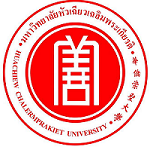Please use this identifier to cite or link to this item:
https://has.hcu.ac.th/jspui/handle/123456789/3606Full metadata record
| DC Field | Value | Language |
|---|---|---|
| dc.contributor.author | Jirawat Pratoomwun | - |
| dc.contributor.author | Paul Thomson | - |
| dc.contributor.author | Kanoot Jaruthamsophon | - |
| dc.contributor.author | Rawiporn Tiyasirichokchai | - |
| dc.contributor.author | Pimonpan Jinda | - |
| dc.contributor.author | Ticha Rerkpattanapipat | - |
| dc.contributor.author | Wichittra Tassaneeyakul | - |
| dc.contributor.author | Nontaya Nakkam | - |
| dc.contributor.author | Pawinee Rerknimitr | - |
| dc.contributor.author | Jettanong Klaewsongkram | - |
| dc.contributor.author | Yuttana Srinoulprasert | - |
| dc.contributor.author | Munir Pirmohamed | - |
| dc.contributor.author | Dean J Naisbitt | - |
| dc.contributor.author | Chonlaphat Sukasem | - |
| dc.contributor.author | จิรวัส ประทุมวัน | - |
| dc.contributor.author | คณุตม์ จารุธรรมโสภณ | - |
| dc.contributor.author | รวิพร ติยะศิริโชคชัย | - |
| dc.contributor.author | พิมลพรรณ จินดา | - |
| dc.contributor.author | ทิชา ฤกษ์พัฒนาพิพัฒน์ | - |
| dc.contributor.author | วิจิตรา ทัศนียกุล | - |
| dc.contributor.author | นนทญา นาคคำ | - |
| dc.contributor.author | ภาวิณี ฤกษ์นิมิตร | - |
| dc.contributor.author | เจตทะนง แกล้วสงคราม | - |
| dc.contributor.author | ยุทธนา ศรีนวลประเสริฐ | - |
| dc.contributor.author | ชลภัทร สุขเกษม | - |
| dc.contributor.other | Huachiew Chalermprakiet University. Faculty of Medical Technology | en |
| dc.contributor.other | University of Liverpool. Department of Molecular and Clinical Pharmacology | en |
| dc.contributor.other | Prince of Songkla University. Faculty of Medicine | en |
| dc.contributor.other | Mahidol University. Faculty of Medicine Ramathibodi Hospital | en |
| dc.contributor.other | Mahidol University. Faculty of Medicine Ramathibodi Hospital | en |
| dc.contributor.other | Mahidol University. Faculty of Medicine Ramathibodi Hospital | en |
| dc.contributor.other | Khon Kaen University. Faculty of Medicine | en |
| dc.contributor.other | Khon Kaen University. Faculty of Medicine | en |
| dc.contributor.other | Chulalongkorn University. Faculty of Medicine | en |
| dc.contributor.other | Chulalongkorn University. Faculty of Medicine | en |
| dc.contributor.other | Mahidol University. Faculty of Medicine Siriraj Hospital | en |
| dc.contributor.other | Department of Molecular and Clinical Pharmacology, University of Liverpoo | en |
| dc.contributor.other | Department of Molecular and Clinical Pharmacology, University of Liverpoo | en |
| dc.contributor.other | Mahidol University. Faculty of Medicine Ramathibodi Hospital | en |
| dc.date.accessioned | 2025-02-01T10:10:39Z | - |
| dc.date.available | 2025-02-01T10:10:39Z | - |
| dc.date.issued | 2021 | - |
| dc.identifier.citation | Front Immunol 2021 Apr 29;12:658593 | en |
| dc.identifier.other | doi: 10.3389/fimmu.2021.658593 | - |
| dc.identifier.uri | https://has.hcu.ac.th/jspui/handle/123456789/3606 | - |
| dc.description | สามารถเข้าถึงบทความฉบับเต็ม (Full Text) ได้ที่ : https://pmc.ncbi.nlm.nih.gov/articles/PMC8117787/ | en |
| dc.description.abstract | HLA-B*13:01-positive patients in Thailand can develop frequent co-trimoxazole hypersensitivity reactions. This study aimed to characterize drug-specific T cells from three co-trimoxazole hypersensitive patients presenting with either Stevens-Johnson syndrome or drug reaction with eosinophilia and systemic symptoms. Two of the patients carried the HLA allele of interest, namely HLA-B*13:01. Sulfamethoxazole and nitroso sulfamethoxazole specific T cell clones were generated from T cell lines of co-trimoxazole hypersensitive HLA-B*13:01-positive patients. Clones were characterized for antigen specificity and cross-reactivity with structurally related compounds by measuring proliferation and cytokine release. Surface marker expression was characterized via flow cytometry. Mechanistic studies were conducted to assess pathways of T cell activation in response to antigen stimulation. Peripheral blood mononuclear cells from all patients were stimulated to proliferate and secrete IFN-γ with nitroso sulfamethoxazole. All sulfamethoxazole and nitroso sulfamethoxazole specific T cell clones expressed the CD4+ phenotype and strongly secreted IL-13 as well as IFN-γ, granzyme B and IL-22. No secretion of IL-17 was observed. A number of nitroso sulfamethoxazole-specific clones cross-reacted with nitroso dapsone but not sulfamethoxazole whereas sulfamethoxazole specific clones cross-reacted with nitroso sulfamethoxazole only. The nitroso sulfamethoxazole specific clones were activated in both antigen processing-dependent and -independent manner, while sulfamethoxazole activated T cell responses via direct HLA binding. Furthermore, activation of nitroso sulfamethoxazole-specific, but not sulfamethoxazole-specific, clones was blocked with glutathione. Sulfamethoxazole and nitroso sulfamethoxazole specific T cell clones from hypersensitive patients were CD4+ which suggests that HLA-B*13:01 is not directly involved in the iatrogenic disease observed in co-trimoxazole hypersensitivity patients. | en |
| dc.language.iso | en_US | en |
| dc.subject | Co-trimoxazole | en |
| dc.subject | โคไตรมอกซาโซล | en |
| dc.subject | Drug allergy | en |
| dc.subject | การแพ้ยา | en |
| dc.subject | Human leukocyte antigen | en |
| dc.subject | แอนติเจนบนเม็ดเลือดขาวของมนุษย์ | en |
| dc.subject | Sulfamethoxazole | en |
| dc.subject | ซัลฟาเมทอกซาโซล | en |
| dc.subject | T cells | en |
| dc.subject | ทีเซลล์ | en |
| dc.subject | Drug hypersensitivity | - |
| dc.title | Characterization of T-Cell Responses to SMX and SMX-NO in Co-Trimoxazole Hypersensitivity Patients Expressing HLA-B*13:01 | en |
| dc.type | Article | en |
| Appears in Collections: | Medical Technology - Articles Journals | |
Files in This Item:
| File | Description | Size | Format | |
|---|---|---|---|---|
| Characterization-of-T-Cell-Responses-to-SMX-and-SMX-NO.pdf | 72.72 kB | Adobe PDF | View/Open |
Items in DSpace are protected by copyright, with all rights reserved, unless otherwise indicated.
